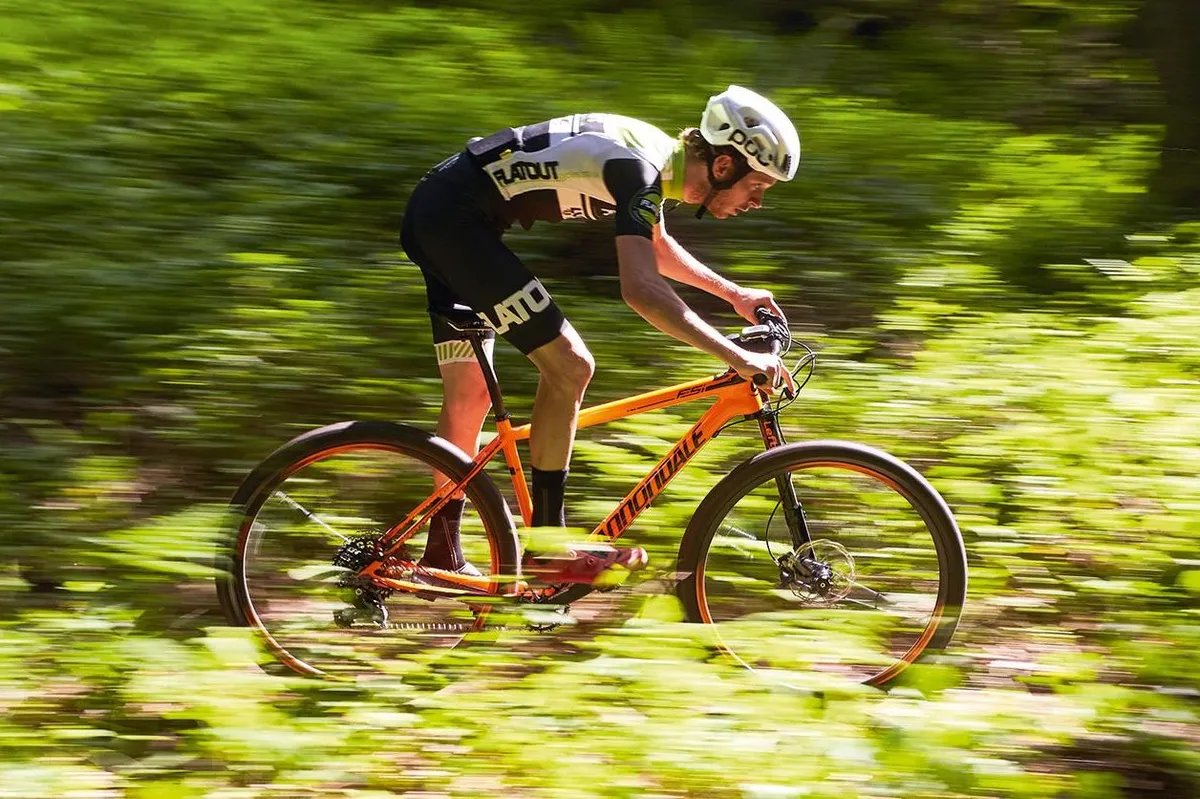Dropper posts have become almost ubiquitous on trail bikes in the last few years, and for enduro racing they are undoubtedly a vital piece of kit on any race worthy bike. But should you use a dropper on a cross country bike?
- Which is faster for racing XC: hardtail or full-suspension?
- Examining the next generation of dropper seatposts
- How to bleed a RockShox Reverb dropper post
What are the benefits of a dropper post?
Having the ability to tuck the saddle out of the way on a descent ensures riders have the maximum level of control possible over their bike, especially when things get rowdy and we need to protect… er, precious cargo.
Despite these advantages, their adoption by the often conservative and weight conscious XC racing crowd has been very slow with only a few riders such as Maxime Marotte embracing the drop’ for top level racing.
This is despite the fact that XC courses have started to include much gnarlier features in recent years. Long gone are the days when XC racing amounted to little more than a fire road crit. Many courses now include features that wouldn’t have been out of place on a downhill course 10 years ago.
To try and get a definitive answer we decided to send our resident XC whippet, Joe Norledge, to the Forest of Dean to compare whether a dropper or fixed seatpost is faster on a modern, technical XC course.

What’s the weight penalty of a dropper post?
Weight weenie-ism penetrates deep into the psyche of every XC racer, so the idea of adding any additional weight is likely to provoke horror in all but the most forward thinking of riders.
In our case, the stock carbon post on Joe’s long term test bike, a rather tasty BMC Team Elite, weighed a svelte 203g whereas the Thomson Elite dropper which replaced it came in at a slightly more portly 585g.
To a mere mortal, 382g may not seem like a lot, but in a world where discarded top caps and custom carbon linkages are the norm, that extra weight amounts to heresy.
The question is whether the increased levels of control outweigh the weight penalty. Read on to find out.

How we tested
We sent Joe on a lap of two different loops, which were very familiar to him at the Forest of Dean, to test out the seatposts.
The first loop, which we’ll call the ‘Hilly Lap’, included a hard and punchy climb followed by a gnarly, steep descent and sections from the downhill tracks at the trail centre.
The second lap involved less climbing, but was slightly longer and included lots of tight, twisty turns. Imaginatively, we’ll call this the ‘Tight Twisting’ lap.
After an easy warm-up lap, we sent Joe on a timed lap of each loop, alternating which post went first to make sure neither had an unfair advantage.
Perhaps most critically Joe’s bike was also fitted with a power meter from Stages, which allowed us to ensure that the effort he was putting in on each lap was consistent. This also ensured that any anomalies in time could be attributed to a difference in equipment rather than Joe just pushing a little harder.
Although not a truly scientific test by any means, we tried to remove as many variables as possible in this test to get some valuable, real world answers.
Is a dropper or fixed post faster for XC racing?
Which is faster for racing XC: a dropper post or fixed? Check out our video to find out.

Hilly lap results
Looking at the data from the hilly lap, we can see that the results from both time and power output were so close that we can effectively call it a draw. The difference in power is within the margin of error for the power meter and the time difference is similarly negligible.
Looking at the lap in more detail yields more interesting results though.
During the climb Joe was only half a second faster with the dropper, but crucially had to put in nine watts more effort to achieve this time. This is inline with expectations as, unsurprisingly, adding any extra weight to your bike will mean you have to push a little harder to achieve an equivalent time.
Likewise, Joe only managed to improve his time on the descent by roughly 1.5 seconds, but commented that on the day he felt much more in control of the bike.
Tight twisting lap results
Onto the tight twisting lap and the results were quite similar.
Overall, Joe managed a time that was 16.5 seconds faster with the dropper post fitted but had to put in 18 watts more effort to achieve this. So whether or not the increase in speed was down to the post or him trying a little harder is unclear.
But similar to the descent on the hilly lap, Joe commented that he was able to brake much later and get back on the power earlier in tricky corners. Over the course of a whole race, this could make a real difference.
Conclusion
Although the stats suggest a relatively minimal improvement in times with the dropper post, we would argue that the benefits go beyond numbers alone.
Reaching the start of a descent after an hour of mashing your pedals around some brutal course, with lungs that feel fit to burst and legs made of jelly, we would gladly take anything that would make our bike handle that little bit easier.
XC races are rarely won on descents but can easily be lost by a simple mistake resulting in a crash. With your seatpost out of the way, you can concentrate wholly on line choice, without the worry of your saddle throwing you off balance.
As a result of these tests you’ll possibly find a dropper seatpost on Joe’s XC bike next season.
